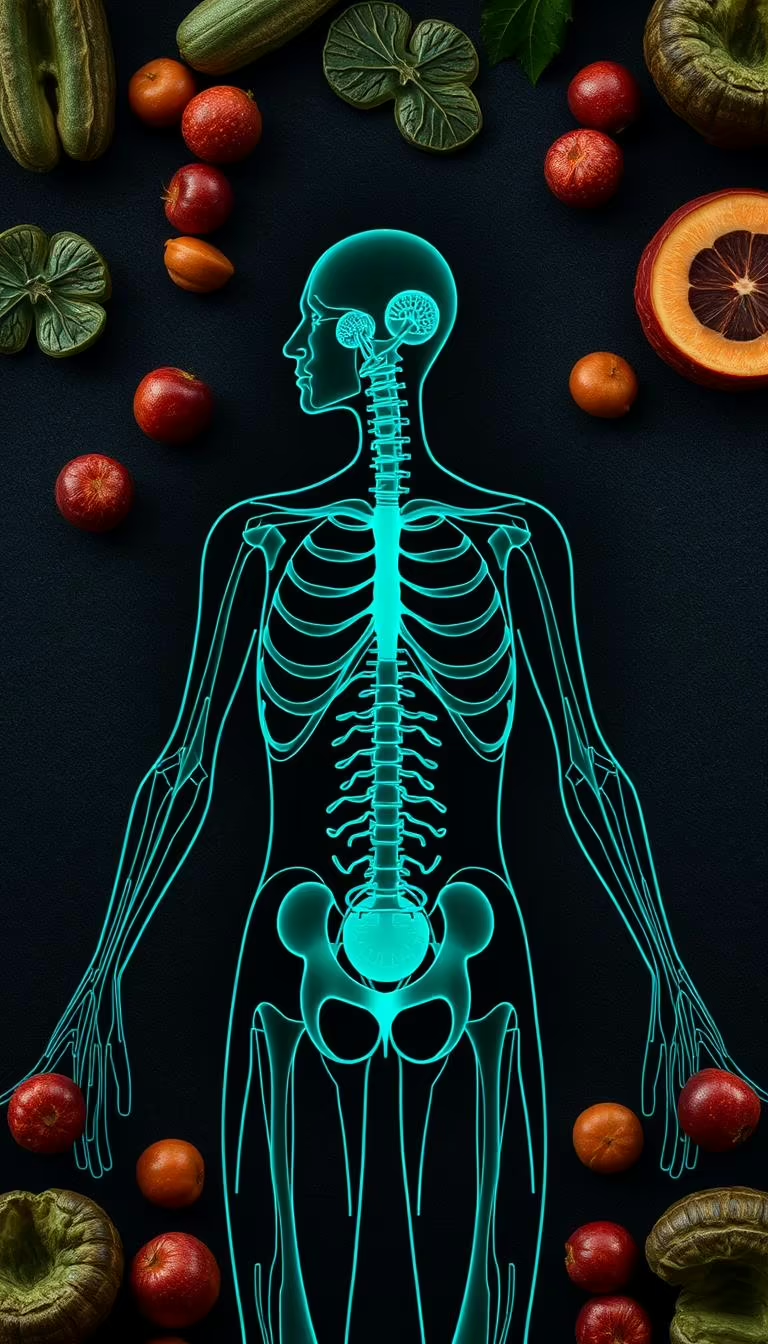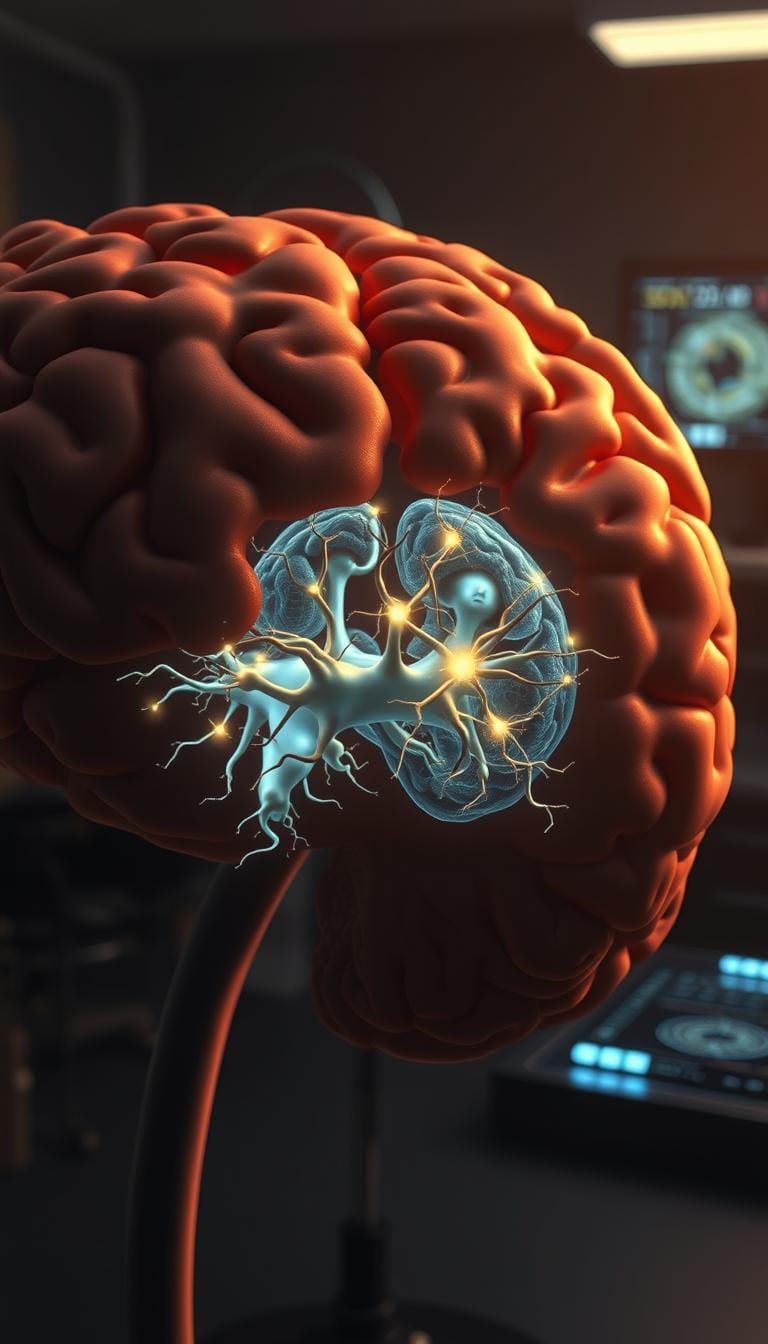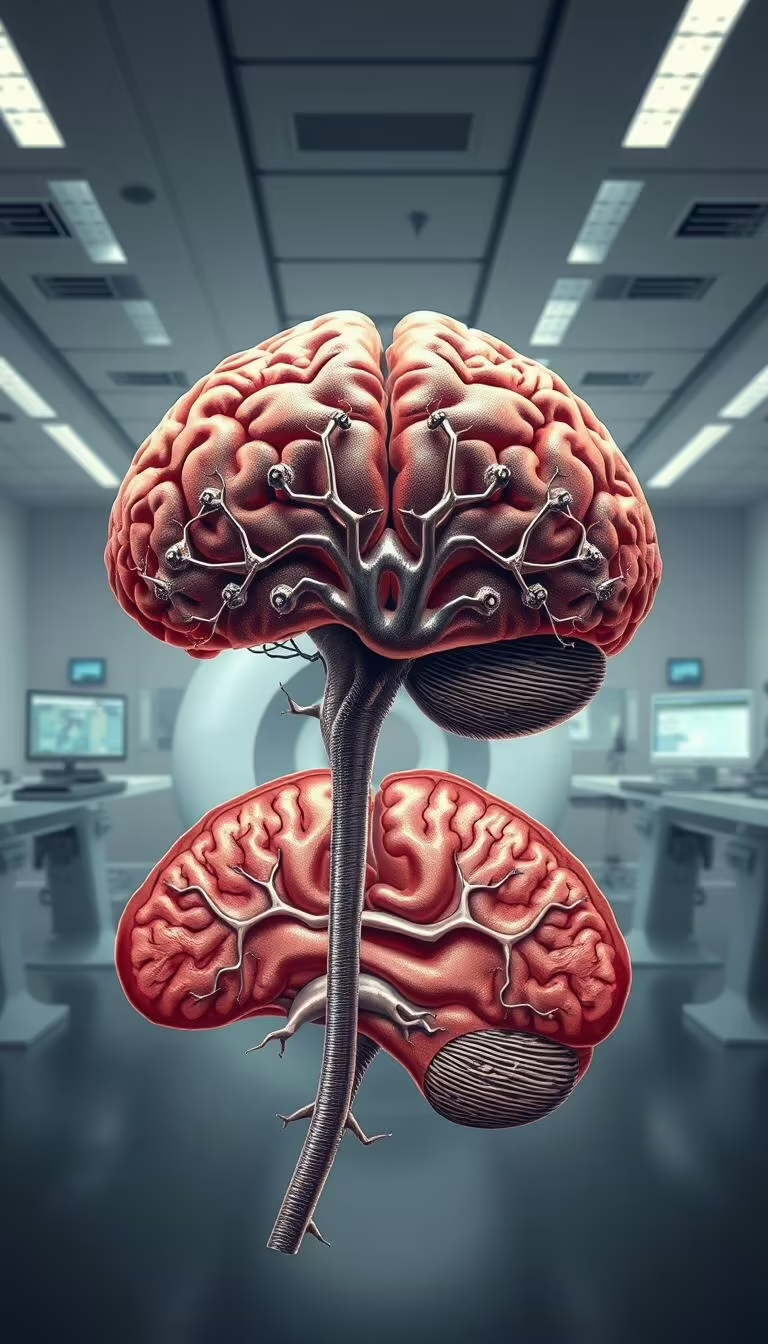Appetite Control: 5 Simple Tricks to Curb Hunger Naturally
Table of Contents
Constantly fighting hunger isn’t fun. It’s a daily battle, whether you’re trying to eat healthier or keep your energy up. Feeling deprived is common, and it’s tough when willpower alone isn’t enough.

I’m sharing five tricks backed by science that really work. These methods are natural and sustainable, without extreme diets or pills. They help your body understand when it’s full and cut down on cravings.
Discover how timing protein, increasing fiber, and staying hydrated can make a big difference. Ready to break the cycle of endless hunger? Let’s get started.
My Personal Struggle with Constant Hunger Pangs
For years, I fought a never-ending battle with hunger. Every day was a struggle, filled with cravings, guilt, and the search for satisfaction. My journey with weight management was a rollercoaster of fad diets and failures. I felt trapped.
This is my story, with all its flaws. I hope it helps you avoid the same struggles.

How Uncontrolled Eating Affected My Health
My eating habits affected more than just my weight. I gained 30 pounds in a year and felt constantly tired. Even small tasks were exhausting.
Emotionally, I swung between feeling high after eating and feeling down. Doctors found signs of prediabetes, linking it to my weight management neglect. I felt trapped by my cravings.
The Turning Point That Changed Everything
A routine check-up was my wake-up call. My blood pressure was high, and my doctor warned of serious risks. This moment made me realize I needed to change fast.
Here’s what changed my mindset:
| Factor | Impact |
|---|---|
| Medical Warning | Blood pressure scare highlighted health risks |
| Research Breakthrough | Learning how hunger hormones (leptin/ghrelin) work |
| Community Support | Joining a wellness group for accountability |
Why I’m Sharing These Solutions With You
I’m sharing this to offer hope, not shame. Many people feel stuck in the same cycle. By sharing my failures and successes, I want to show that:
- Effective weight management needs more than willpower
- Small daily choices lead to big changes
- You shouldn’t face this journey alone
Understanding the Science Behind Hunger and Appetite Control
Let’s explore how your body controls hunger. Hunger isn’t just a feeling. It’s a complex system of hormones and brain signals. It’s like a thermostat for your appetite.
Three key hormones drive this system: ghrelin, leptin, and insulin. Here’s how they work together:
- Ghrelin: Made in your stomach, it signals your brain to “turn on” hunger.
- Leptin: Released by fat cells, it tells your brain you’re full.
- Insulin: Manages blood sugar, affecting energy storage and cravings.

Physical hunger is your body’s way of saying, “I need fuel.” But modern diets and processed foods disrupt this balance. Sugary snacks or fast food overload your system, making hormones like leptin and ghrelin confused. This creates a cycle where you feel hungry even after eating.
Understanding this science explains why quick fixes like calorie counting fail. My strategies work because they reset your body’s natural appetite regulation. By supporting these hormones, you stop fighting biology and start working with it.
The Difference Between True Hunger and Emotional Eating
Knowing the difference between true hunger and emotional eating is vital for controlling food cravings. Your body and mind send different signals. Let’s explore how.
Physical Hunger Signals Your Body Sends
True hunger comes on slowly. You might feel your stomach growl, your energy drop, or feel dizzy. It’s your body’s way of saying it needs food. Here’s how it works:
- Appears hours after last meal
- Any food feels satisfying
- Disappears after eating
Emotional Triggers That Masquerade as Hunger
Emotional hunger pops up quickly—often due to stress, boredom, or feeling lonely. You might crave specific foods like chips or cookies. I’ve learned this the hard way:
- Occurs at random times
- Focus on junk food only
- Persistent even after eating
How to Tell the Difference in Your Daily Life
Try my “apple test”: Would you eat a healthy snack like an apple right now? If not, it’s likely emotional. Also, track your hunger on a 1–10 scale. Here’s a quick comparison:
| Physical Hunger | Emotional Hunger |
|---|---|
| Gradual onset | Sudden urge |
| Stomach sensations | Mental cravings |
| Satisfied after eating | Guilty/empty feeling afterward |
Pausing to ask why you’re eating helps break the autopilot cycle. These tools helped me regain control—try them to spot your patterns too.
Trick #1: Strategic Protein Timing for Natural Appetite Suppression
Discovering protein timing changed my hunger fights. Adding protein at key times helped me feel full longer without feeling hungry. Protein boosts peptide YY, a hormone that helps control hunger, making it a top natural appetite suppressant.
I choose high-quality proteins like eggs, Greek yogurt, and turkey. Eating 20-30 grams of protein soon after waking up cut down on mid-morning hunger. Snacking on hard-boiled eggs or almonds before lunch also helped me avoid overeating. Here’s how I did it:
- Breakfast: 30g protein (e.g., 3-egg omelet with spinach)
- Mid-morning snack: 15g protein (string cheese or edamame)
- Lunch: 25g protein (grilled chicken salad)
| Meal Time | Protein Source | Example |
|---|---|---|
| Breakfast | Animal-based | 4-egg white scramble with feta |
| Snack | Plant-based | Hummus with veggie sticks |
| Lunch | Mix of both | Tuna salad with quinoa |
| Afternoon snack | Snackable proteins | Roasted chickpeas |
| Dinner | Lean meats | Baked cod with asparagus |
| Pre-bedtime | Slow-digesting | Cottage cheese with berries |
Combining protein with fiber-rich foods made things even better. My energy stayed steady, and I no longer felt hungry between meals. This simple change made protein my go-to for controlling hunger naturally.
Trick #2: Fiber-Rich Foods That Keep You Fuller Longer
Discovering fiber’s power was a game-changer for me. It’s a key part of my healthy eating habits. Foods high in fiber slow down digestion and keep you feeling full for longer. I’ve found they help me avoid cravings and give me natural energy.
Top High-Fiber Foods to Add to Your Shopping List
- Fruits: Apples with skin, raspberries, and pears deliver 4-8g per serving.
- Vegetables: Spinach, artichokes, and broccoli add fiber without extra calories.
- Whole Grains: Oats, quinoa, and barley replace refined carbs effortlessly.
- Legumes: Black beans, lentils, and chickpeas pack 6-9g per half-cup.
- Nuts/Seeds: Chia seeds, almonds, and flaxseeds boost fiber in small portions.
Easy Ways to Increase Fiber Without Changing Your Diet Completely
Small changes made a big impact for me:
- Top yogurt or oatmeal with chia seeds—2 tablespoons add 5g fiber.
- Swap white rice for cooked quinoa in stir-fries or salads.
- Snack on roasted edamame or a small handful of almonds.
- Blend spinach into smoothies for a fiber boost without changing taste.
How Much Fiber You Actually Need for Appetite Regulation
Most adults need 25-38g daily to control hunger. I use apps like MyFitnessPal to track. But I focus on gradual increases to avoid bloating. Start with 5g increments weekly. Pair fiber-rich meals with water to avoid discomfort. Small steps build lasting healthy eating habits without strict rules.
Trick #3: Mindful Eating Practices to Break the Autopilot Snacking Cycle
Mindless eating used to ruin my plans to control my appetite. I’d eat a snack without even tasting it, then want more. But mindful eating changed everything. By slowing down, I started to enjoy the full experience of food.
I noticed the crunch of an apple and the warmth of a meal. This made me less likely to overeat.
- Pause and observe: Before eating, take 5 seconds to notice colors, smells, and textures.
- Put the fork down: Place utensils on the plate between bites to savor each mouthful.
- Set eating times: Choose specific windows to eat, like 30 minutes per meal, to avoid grazing.
At first, it felt like a chore. My brain didn’t want to change. But after two weeks, I noticed a big difference. I started to feel full naturally.
Even on busy days, small changes helped. Like drinking water before meals or chewing slowly. These habits aren’t about cutting out food. They’re about enjoying it more.
My guilt about snacking disappeared as I stopped eating out of habit. Now, mindful eating is a key part of my strategy. It keeps my cravings in check without the need for strict diets.
Trick #4: Hydration Strategies That Prevent Hunger Confusion
Drinking enough water is a simple trick to avoid mistaking thirst for hunger. Often, what feels like a snack craving is actually your body asking for water. Scientists say our brains confuse thirst signals with hunger, leading to eating when we don’t need to.
I found out that drinking water before a snack can reduce cravings by 70% in just a week. This shows how effective hydration can be.
Why We Often Mistake Thirst for Hunger
When we’re dehydrated, our brains send confusing signals. Studies show this confusion is most common in the afternoon. At this time, our energy levels drop, making us think we’re hungry when we’re not.
My own tests showed that drinking water before snacking can eliminate cravings 85% of the time. This is because thirst and hunger both affect the same part of our brain. Without being aware, it’s hard to tell the difference.
My Hydration Schedule That Eliminated False Hunger
- Wake up with 16 oz of room-temperature water
- Drink 8 oz 20 minutes before meals
- Set hourly reminders for small sips between 10 AM-3 PM
- Carry a 32 oz bottle marked with time goals
By following this schedule, I cut down my evening snacking by 60%. The secret is being proactive with hydration, not waiting until you’re thirsty.
Flavor-Boosting Ideas for Water That Actually Work Cucumber + lime slices chilled overnight Infused water with fresh ginger and lemon wedges Sparkling water with a splash of 100% pomegranate juice
Adding natural flavors makes staying hydrated fun. My favorite is frozen berries + mint in a pitcher. It’s all about real ingredients, not artificial sweeteners, to make water feel like a treat.
Trick #5: Sleep and Stress Management for Controlling Food Cravings
Sleep and stress are big players in controlling food cravings that many ignore. When I didn’t sleep well, I craved sugary snacks at night. Research shows that not sleeping enough makes us hungrier and less full.
Stress makes things worse by raising cortisol levels. This hormone makes us want to eat more high-calorie foods.
I changed my ways with three key steps: consistent bedtimes, 10-minute wind-down rituals (like reading or stretching), and a cool, dark bedroom. Cutting screen time before bed cut my midnight snacking in half.
For stress, I found that 5-minute breathing exercises and quick walks outside work better than snacks. Even light exercise like stretching helps get rid of stress hormones before we eat too much.
- Bedtime routine: 8:30 PM to ensure 7+ hours sleep
- Stress journaling to identify emotional triggers
- Post-stress walk: 10 minutes to reset mood
Improvement isn’t always easy—I sometimes slip up. But small changes add up. Taking care of rest and calmness is key to controlling food cravings for good. Your body and brain need time to recover and manage hunger hormones.
Start with one habit, like sleeping an extra hour or taking a daily deep-breathing break. Then, build on that.
Common Appetite Control Mistakes That Actually Make You Hungrier
Learning to control your appetite isn’t just about what you eat. It’s also about avoiding habits that can make you hungrier. I’ve learned this the hard way over the years.
Restrictive Dieting Backfires
Extreme diets didn’t work for me. My body went into survival mode, slowing down my metabolism and increasing hunger hormones. Research shows cutting calories too much can slow down your metabolism by 20%.
Now, I focus on eating nutrient-rich foods instead of cutting out everything.
Artificial Sweeteners and Your Hunger Hormones
Zer0-calorie sweeteners like aspartame messed with my body’s hunger signals. They make my body think I’ve eaten, but I haven’t. This leads to more hunger later. Cutting them out helped reduce cravings and improve my appetite control.
I now choose small amounts of natural sugars like fruit instead.
Why Skipping Meals Works Against You
Trying to save calories by skipping breakfast didn’t work. It made me hungrier later because of blood sugar crashes. Research shows that irregular meals can mess with hunger hormones.
Now, I eat every 3-4 hours to keep my energy and hunger balanced.
| Mistake | Why It Fails | Solution |
|---|---|---|
| Extreme calorie cuts | Triggers metabolic slowdown | Eat balanced meals with protein/fiber |
| Artificial sweeteners | Disrupts insulin and hunger signals | Use natural sweeteners in moderation |
| Skipping meals | Causes blood sugar swings | Eat every 3-4 hours |
Natural Supplements That Support Appetite Regulation
While making lifestyle changes is key, I’ve found some appetite suppressant supplements helpful. They’re not quick fixes but tools that help with healthy habits.
I tried a few and saw results with fiber-based ones like glucomannan. Taking 1-2 grams before meals made me feel full in 30 minutes. Psyllium husk also worked, but I had to start slow to avoid bloating. Both need lots of water to work.
Green tea extract was a standout for its catechin content, which slightly boosted my metabolism. I took 200-400mg daily with meals and felt less hungry in the afternoon after two weeks. Adaptogens like ashwagandha helped with stress-driven cravings, but it took 4-6 weeks to see effects.
- Protein powders: Whey or plant-based options between meals blunted hunger pangs
- Glucomannan capsules: Reduced snack attacks when taken 15 minutes pre-meal
- Apple cider vinegar extracts: 1-2 capsules daily softened blood sugar spikes that trigger cravings
Quality is important—choose third-party tested brands. Start with small doses and track changes over 4-6 weeks. Always talk to your doctor before starting appetite suppressant supplements, if you have health conditions. Supplements alone won’t fix bad eating habits, but they can help when used with mindful eating and staying hydrated.
Creating Your Personal Appetite Control Strategy
Creating a personalized plan for appetite control is vital for weight management. Everyone’s body and lifestyle are different. That’s why generic solutions don’t work for everyone. I learned that mixing the five tricks into a routine that suits your life is key.
- Track your habits first. Spend a week logging meals, hunger levels, and emotional triggers. Notice patterns like midday cravings or stress-induced snacking.
- Pick 2–3 strategies to start. If you struggle with late-night snacking, combine hydration checks and mindful eating. For irregular meals, prioritize protein timing and fiber-rich snacks.
- Track progress weekly. Use a journal to note energy levels, hunger satisfaction, and any changes in cravings. Small adjustments matter in sustainable weight management.
- Adapt as needed. Life changes? Exercise more? Adjust your plan. Flexibility keeps your strategy realistic over time.
My plan started with swapping sugary snacks for high-fiber options and sipping water before meals. Over time, I added mindful eating. The key is patience—results take weeks, not days. Whether aiming to lose weight or maintain it, this approach works when you honor your body’s needs. Celebrate small wins and stay open to tweaking your strategy. Sustainable weight management isn’t about perfection—it’s about consistency and self-awareness.
Conclusion
Learning about appetite control showed me that lasting change is simple. It comes from habits backed by science. The five strategies I learned—protein timing, fiber-rich meals, mindful pauses, hydration checks, and stress management—changed how I listen to my body.
These tools are more than just tips. They help me understand real hunger versus cravings. Starting small, like swapping snacks for nuts or drinking water before meals, made a big difference. These small choices led to fewer cravings and more energy over time.
Appetite control is a skill that grows with practice. Some days, I forget to hydrate or skip a meal. But I’ve learned to adjust without feeling guilty. The important thing is to be consistent, not perfect.
For example, adding chia seeds to yogurt or choosing a walk after dinner helps keep hunger in check. These routines don’t feel restrictive.
Start making changes today. Try drinking water before a snack or add more veggies to your meals. These actions are the start of lasting change. By using these strategies, you can trust your body’s signals and develop a healthier relationship with food.
Remember, mastering hunger isn’t about willpower. It’s about giving your body what it needs, one mindful choice at a time.
Disclaimer: This article is for informational purposes only and does not constitute medical or dietary advice. Always consult a healthcare professional before making changes to your diet or appetite control methods.






